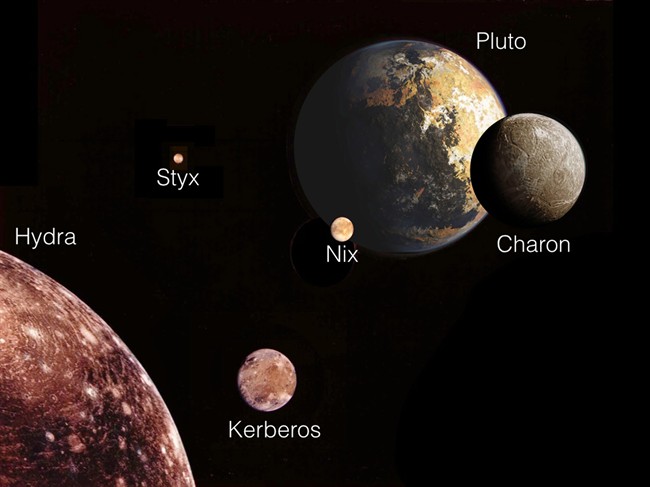WASHINGTON – There’s a chaotic dance going on at the far end of our solar system, involving Pluto and five of its closest friends, a new study finds.

Hubble Space Telescope images of Pluto, its largest moon Charon, and tinier moons Styx, Nix, Hydra and Kerberos show the odd rhythmic gyrations of the six distant objects in a dance unlike anything in our solar system.
READ MORE: Why you should get excited about the mission to Pluto
What makes it so odd is that there’s a double set of dances going on. First, Pluto and Charon are locked together in their own waltz “as if they are a dumbbell” with a rod connecting them, said study author Mark Showalter of the SETI Institute in California. It’s the solar system’s only binary planet system, even though Charon isn’t technically a planet, he said. Pluto, too, is no longer considered a full planet.
“It’s pretty darn weird,” Showalter said.
But Pluto and Charon aren’t alone, and that’s where it gets more complicated.
The four little moons circle the Pluto-Charon combo, wobbling a bit when they go closer to either Pluto or Charon, being pushed and pulled by the two bigger objects.
Those four moons orbit Pluto-Charon in a precise rhythmic way, but with a twist: They also interact when they near each other. So it seems like they all dance to one overarching beat but not quite in the same way, just doing their own thing, said planetary scientist Heidi Hammel of the Association of Universities for Research in Astronomy.
“It’s kind of like you’d see at a Grateful Dead concert,” Hammel said. She wasn’t part of the study, but praised it as giving a glimpse of what might be happening in other distant star systems where there are two stars and planets that revolve around them, like the mythical Star Wars world of Tatooine.
NASA’s $700 million New Horizons spacecraft will arrive in the Pluto system in mid-July after a nine-year five-billion kilometre flight that started before Pluto was demoted to dwarf-planet status.

Comments